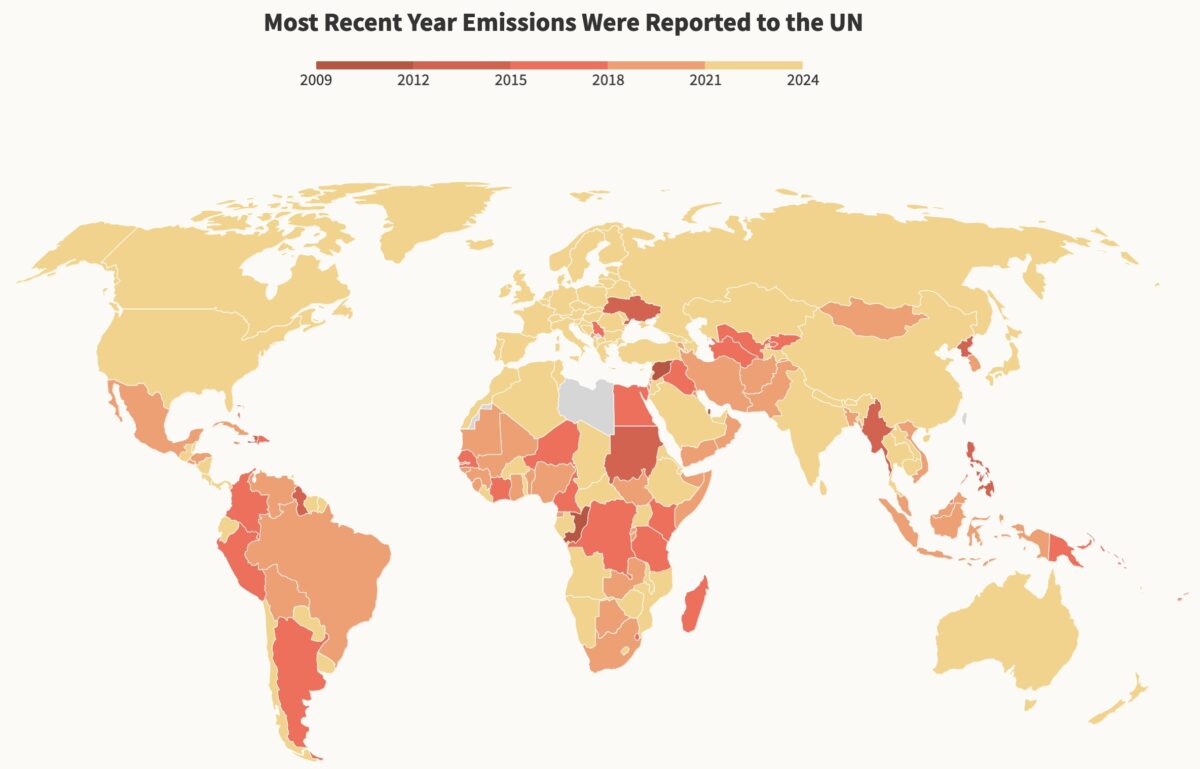
The data supplied to the UNFCCC, and published on its website, are typically out of date, inconsistent, and incomplete. For most countries, “I would not put much value, if any, on the submissions,” says Glen Peters of the Centre for International Climate Research in Norway, a longtime analyst of emissions trends.
By one recent count, national emissions inventories total just 70% of the actual additions to the air, as calculated using remote sensing and model analysis. The remaining 30% are unaccounted for.
One reason is that the reporting rules for national inventories are a political compromise. They are precise and detailed for rich developed nations, known in U.N. climate jargon as Annex 1 nations.
But the rules are much less rigorous for developing countries, known as non-Annex 1 nations. Data submissions from them can be arbitrary, sometimes outright implausible, and are rarely independently checked.
This is even though many “developing” nations, including China, have emissions greater than their “developed” counterparts. As a result, two of today’s three biggest emitters — China and India — as well as oil-rich Gulf states with per-capita emissions higher than any Annex 1 nation, need only comply with the less strict reporting standards.
The reasons for the data gaps vary. Some emissions are eminently measurable but are expressly excluded from the U.N. reporting system because there is no agreement on how to apportion them to national inventories. These include international aircraft and shipping, which make up around 5% of global emissions.
Another category is military activity. It is “one of the most urgent,” says Matthias Jonas, an environmental scientist at the International Institute for Applied Systems Analysis in Austria. He has found that military fuel use, ammunition firing, and fires set off by bombing during the first 18 months of the conflict in Ukraine caused more emissions than Portugal. Another study estimated that the U.S. military also emits more CO2 than Portugal’s national total.
The problem of underreporting is compounded because, according to the public online record, many non-Annex 1 nations have been extremely slow in meeting their requirement to submit inventories every four years. Some backsliders are states at war or with unstable governments. Syria last filed in 2010, Myanmar in 2012, Haiti in 2013, and Libya has never filed. But others have no such excuse. The Philippines last sent its inventory in 2014, and Guyana in 2012.
Most startling is Qatar — a major Gulf natural-gas exporter with per-capita emissions widely regarded as the highest in the world. But their government has only filed a formal inventory of those emissions once, in 2011, and provided data for 2007. Since then, Qatar’s actual emissions are thought to have almost doubled.
There are also uncertainties in how reliably those activities are converted into emissions estimates.
When John Liggio, an air quality researcher at Environment and Climate Change Canada, a government agency, cross-checked his government’s declared emissions from the energy-intensive extraction of the oil sands deposits in Alberta, the results were embarrassing. Aircraft measurements of CO2 in the air above the tar sands suggested that the real emissions were 64% higher than those being reported.
There may also be previously unconsidered anthropogenic emissions. This month, ecologist Trisha Atwood of Utah State University published calculations suggesting that fishing trawlers that churn up the ocean floor are releasing more CO2 into the atmosphere annually than Great Britain.
Then there are forests. Geographer Clemens Schwingshackl at the Ludwig-Maximilians University in Munich found that governments collectively claim their forests are soaking up 6 billion tons more CO2 each year than scientists can account for. That gap is more than total U.S. emissions from all activities.